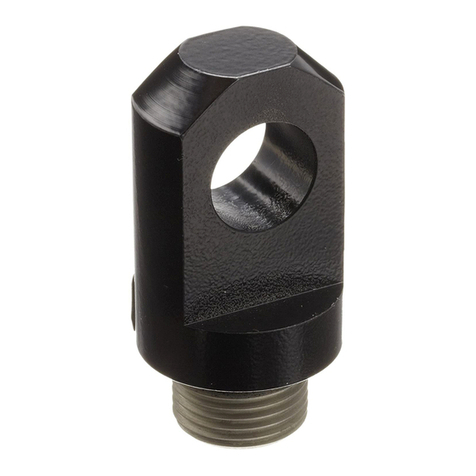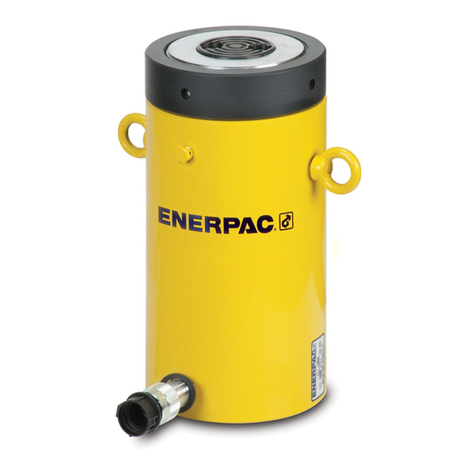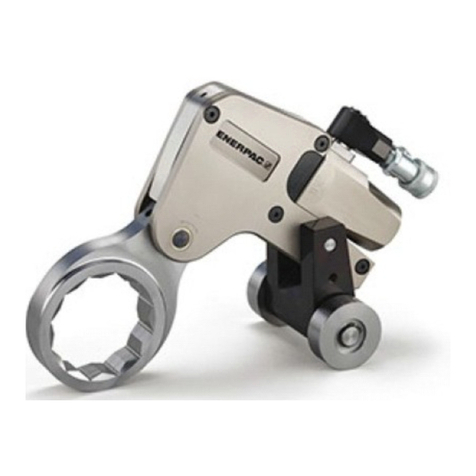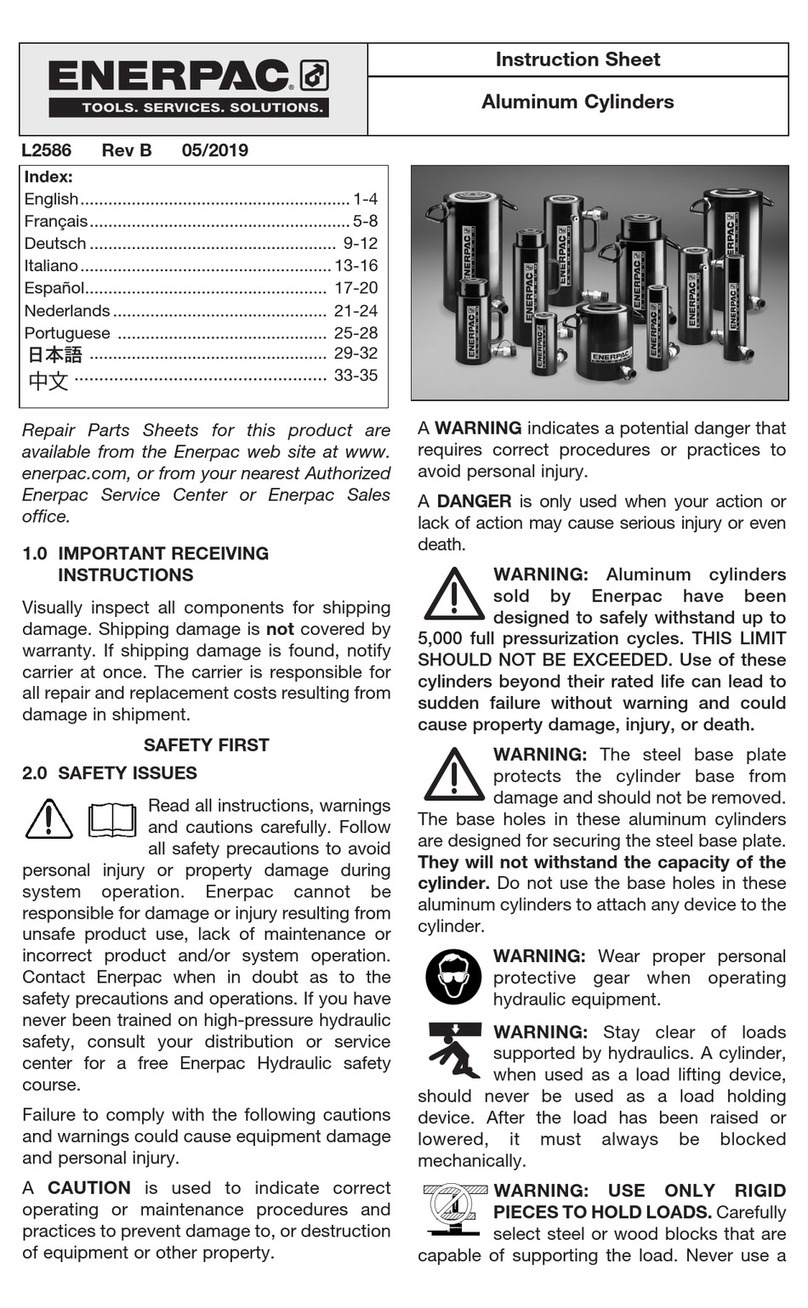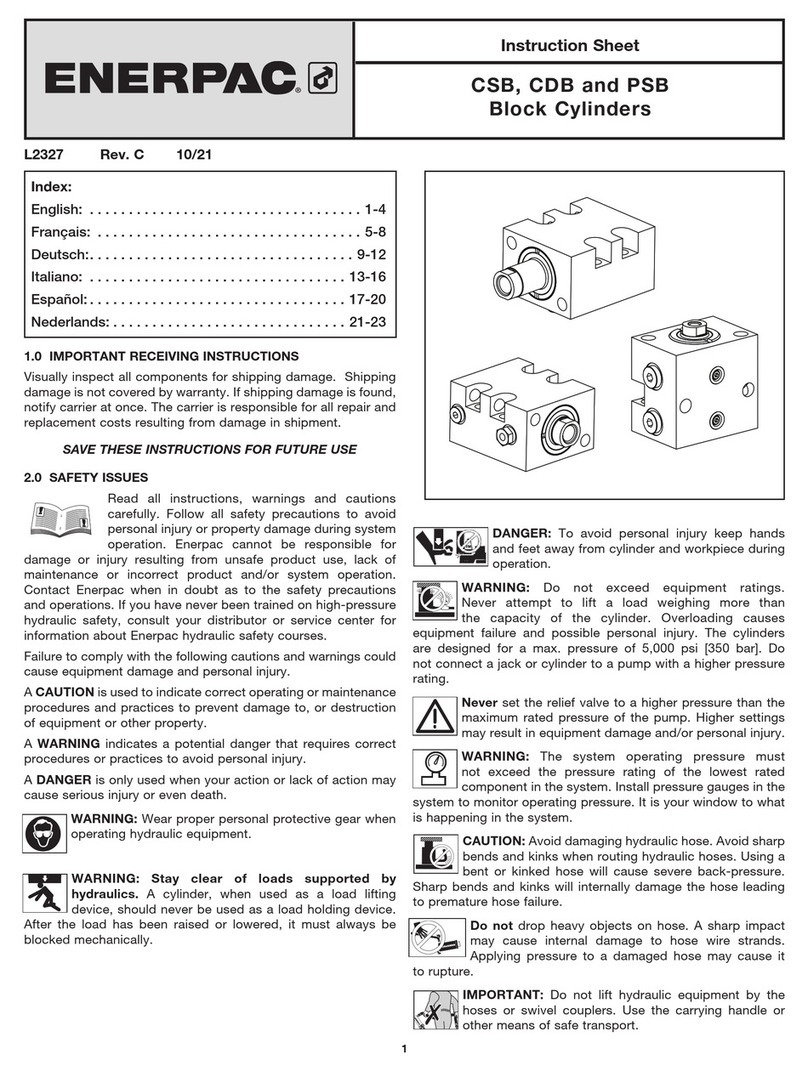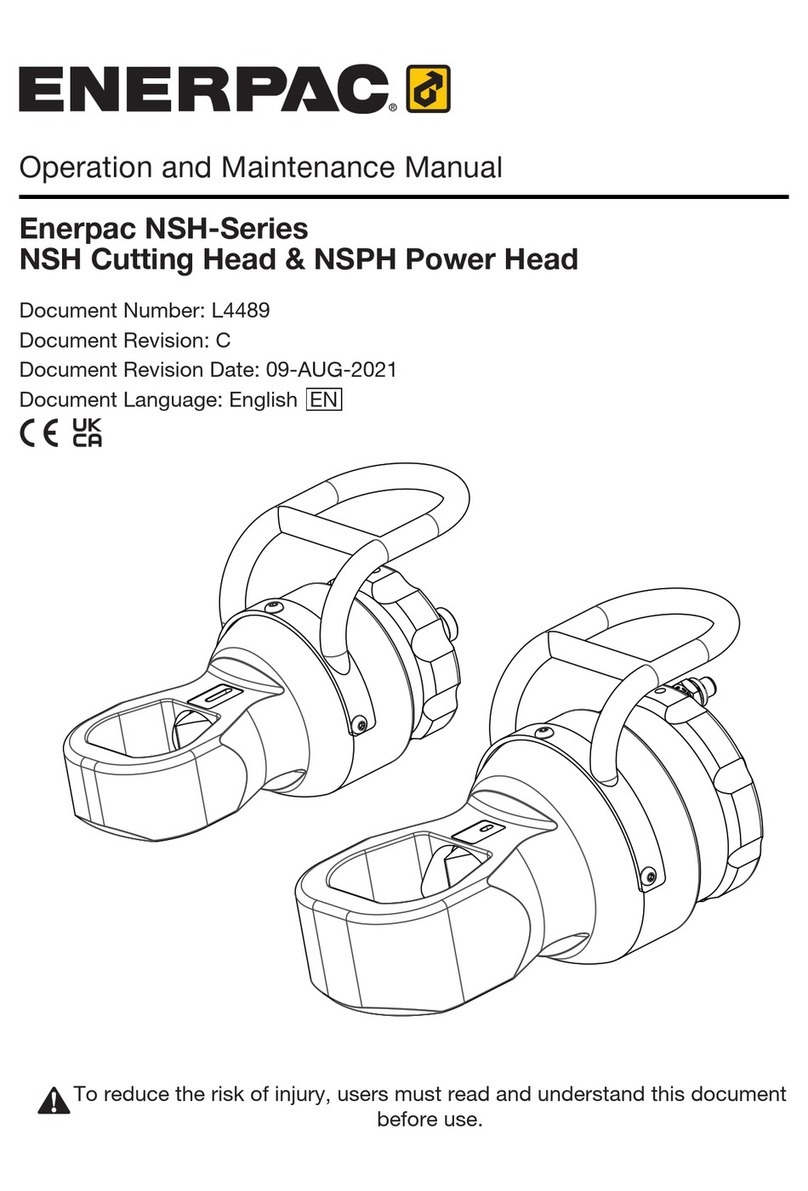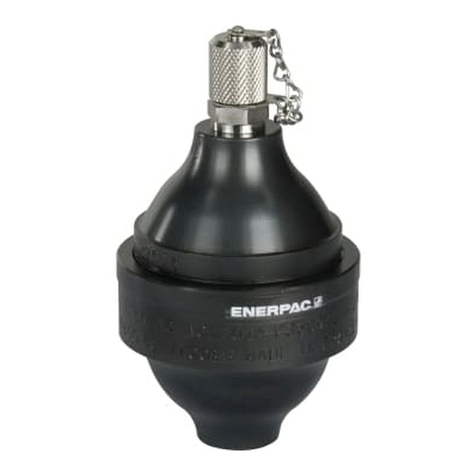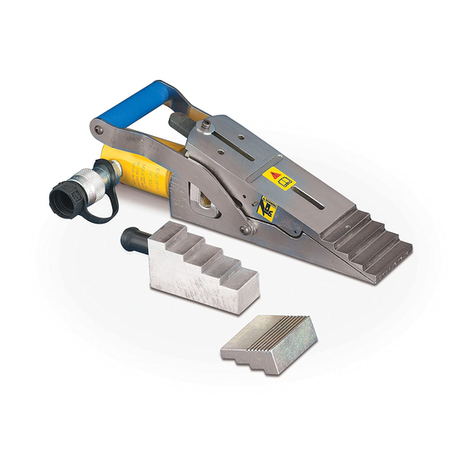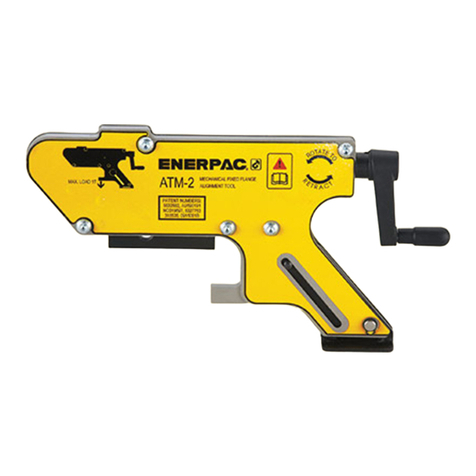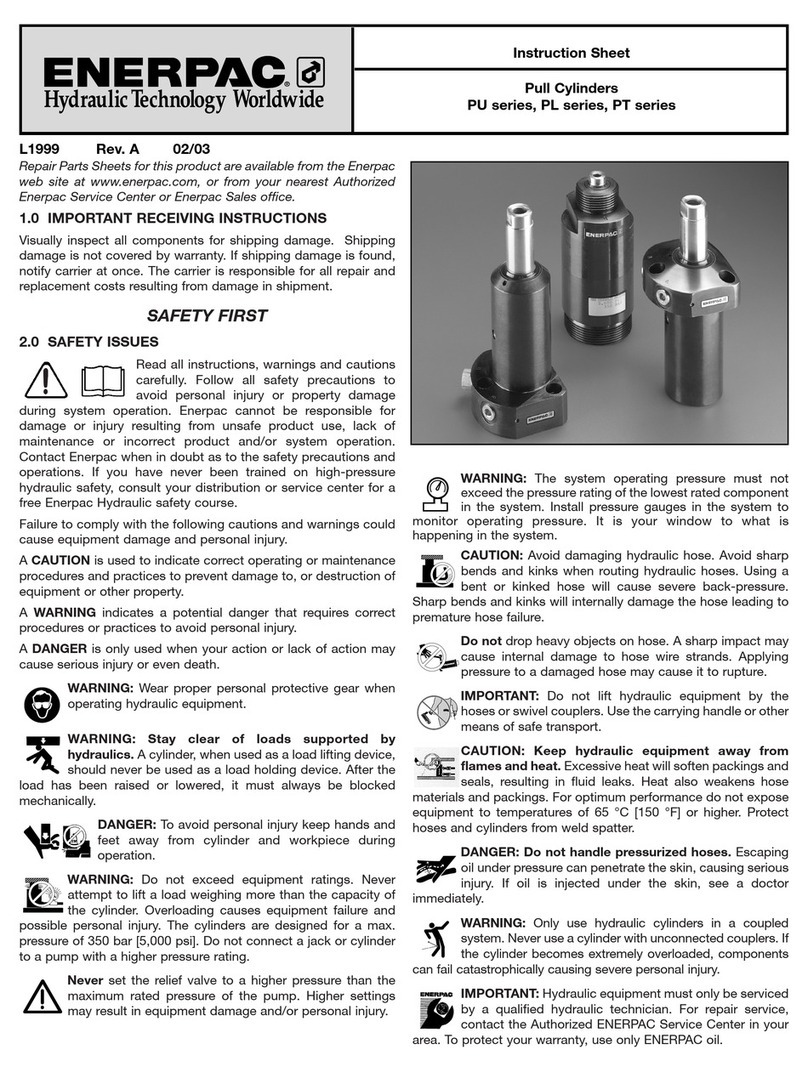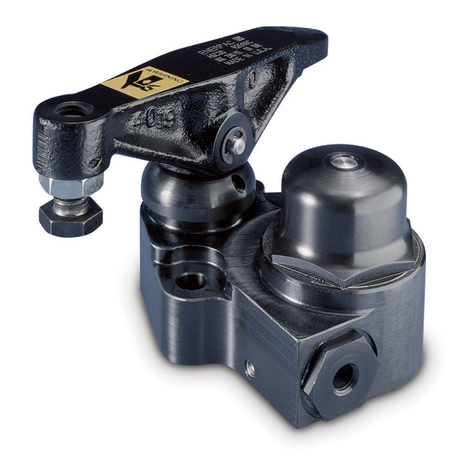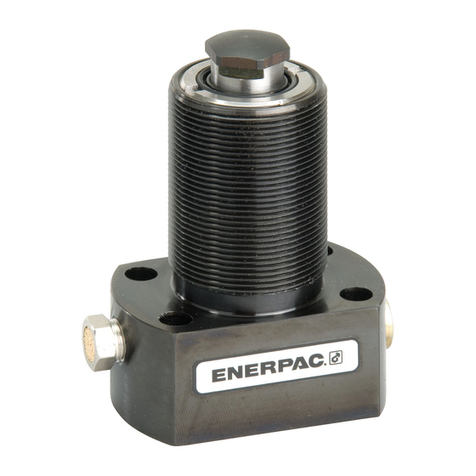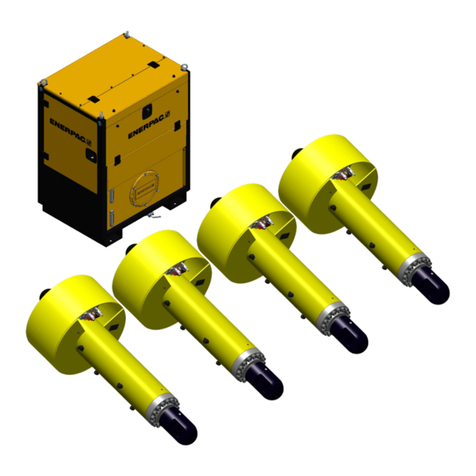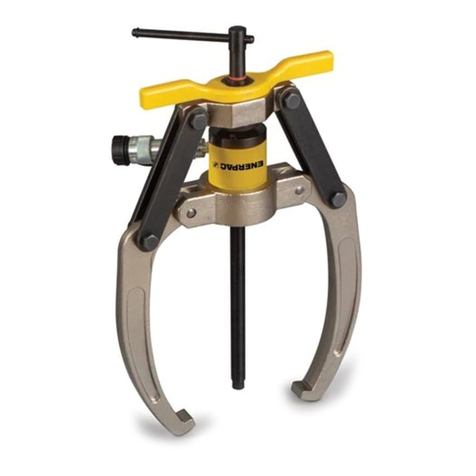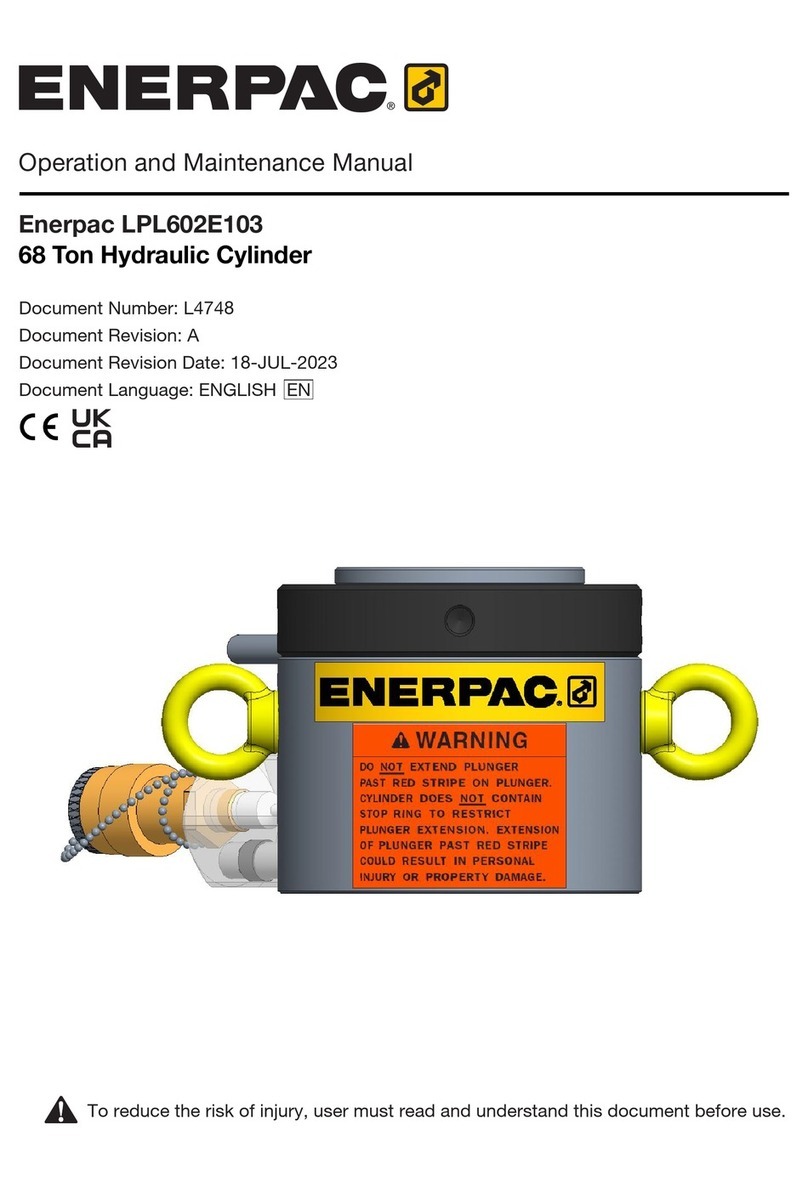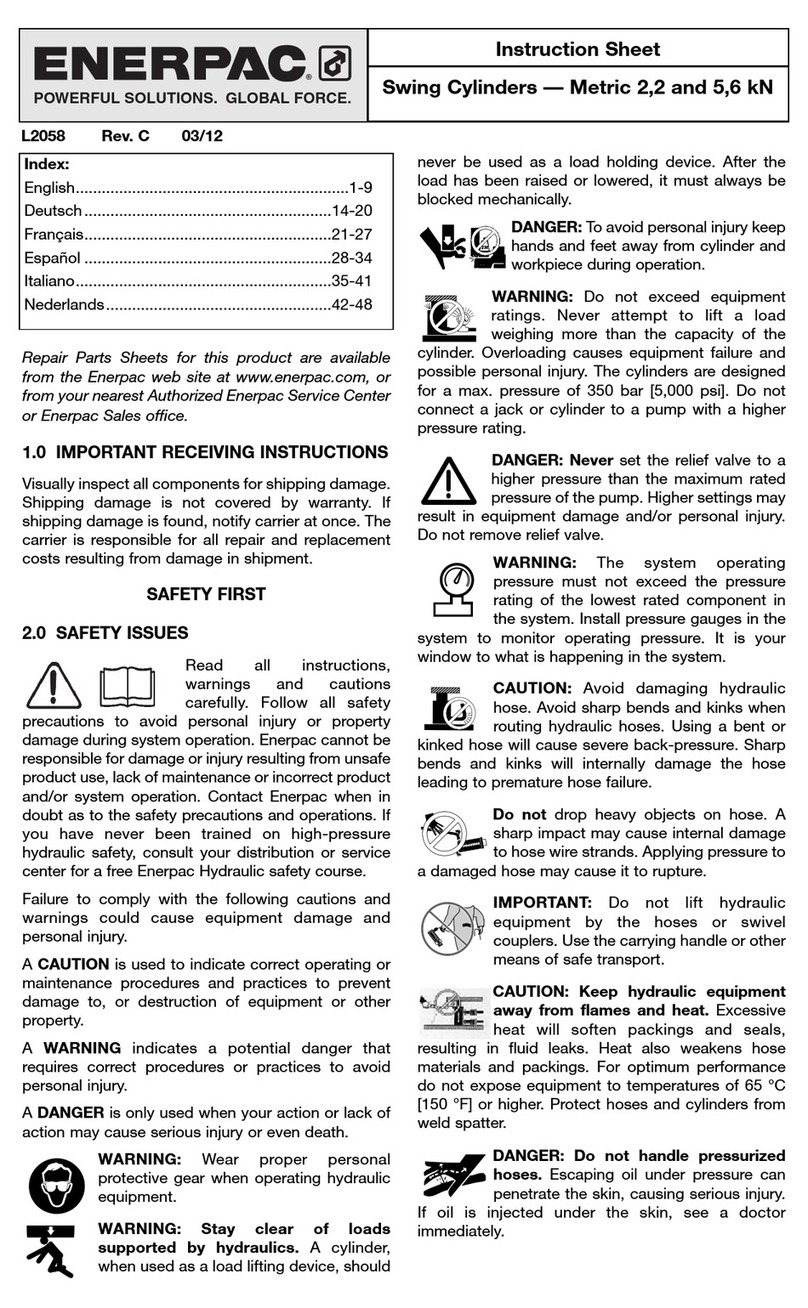
2
• Be aware that puller capacity will vary, depending on the
puller model, configuration and other variables. In some
instances, the rated capacity of the puller may be less than
the rated capacity of the hydraulic cylinder.
• Never attempt to pry the puller by inserting tools or other
objects between the jaws. This may cause center bolt
damage.
• Use hydraulic pressure gauges to verify proper operating
pressure in the hydraulic system. Do NOT exceed maximum
pressure limits of the lowest rated component in your
system. Always use high pressure hoses and fittings.
• It is impossible to predict the exact force needed for every
pulling situation. The amount of press fit and force of removal
can vary greatly between jobs. Set-up requirements along
with the size, shape and condition of the parts being pulled
are variables which must be considered. Study each pulling
application before you select your puller.
• Do not overload equipment. Use the correct size puller for
your application. If you have applied maximum force, and the
part still will not move, then use a larger capacity puller. Use
of a sledge hammer to loosen parts is not recommended.
• Do not use puller if threads on adjusting rod, threaded collar
or hydraulic cylinder are damaged or worn. Do not use puller
if adjusting rod is bent.
• Do not over-extend the hydraulic cylinder. Do not operate
the cylinder beyond the limits of its rated stroke.
• Apply force gradually. Align puller grip jaws as required. Be
sure the setup is rigid and that puller is square with the work.
• Never use a puller that is damaged, altered or in need of
repair.
• Always be sure that the adjusting rod is loosened and
hydraulic pressure is completely relieved before performing
any puller adjustment or repair procedures. Never service
the puller while it is installed and under tension.
• Always read, understand and follow all safety precautions
and instructions, including those that are contained within
the procedures of this manual.
2.3 Additional Hydraulic Safety Precautions
WARNING
Failure to observe and comply with the following
precautions could result in death or serious personal
injury. Property damage could also occur.
• Do not remove or disable the pump relief valve. Never set
the relief valve to a higher pressure than the maximum rated
pressure of the pump.
• The puller hydraulic cylinder is designed for a maximum
pressure of 10,150 psi [700 bar]. Do not connect a pump
with a higher pressure rating to the cylinder.
• To avoid personal injury and equipment damage, make sure
all hydraulic components are rated for at least 10,150 psi
[700 bar] working pressure.
• The system operating pressure must not exceed the
pressure rating of the lowest rated component in the system.
Install pressure gauge(s) in the system to monitor operating
pressure. It is your window to see what is happening in the
system.
• Make sure that all system components are protected from
external sources of damage, such as excessive heat, flame,
moving machine parts, sharp edges and corrosive chemicals.
• Do not handle pressurized hoses. Escaping oil under
pressure can penetrate the skin. If oil is injected under the
skin, see a doctor immediately.
• Always do a visual inspection of the puller and puller hydraulic
system before placing it into operation. If any problems are
found, do not use the puller. Have the equipment repaired
and tested before it is returned to service.
• Never use a hydraulic cylinder that is leaking oil. Do not use
a cylinder that is damaged, altered or in need of repair.
• Do not loosen plugs, relief valves or any other hydraulic
components unless hydraulic pressure is completely
relieved.
• Always be sure that hydraulic pressure is fully relieved
before disconnecting hydraulic hoses, loosening hydraulic
couplers, or performing any cylinder disassembly or repair
procedures.
• Always read, understand and follow all safety precautions
and instructions, including those that are contained within
the procedures of this manual.
CAUTION
Failure to observe and comply with the following
precautions could result in minor or moderate personal
injury. Property damage could also occur.
• Avoid damaging hydraulic hose. Avoid sharp bends and
kinks when routing hydraulic hoses. Using a bent or kinked
hose will cause severe back-pressure. Sharp bends and
kinks will internally damage the hose, leading to premature
hose failure.
• Do not drop heavy objects on hose. A sharp impact may
cause internal damage to hose wire strands. Applying
pressure to a damaged hose may cause it to rupture.
• Do not lift hydraulic equipment by the hoses or swivel
couplers. Use the carrying handle or strap.
• Keep hydraulic equipment away from flames and heat.
Excessive heat will soften packings and seals, resulting in
fluid leaks. Heat also weakens hose materials and packings.
For optimum performance, do not expose equipment to
temperatures of 150˚F [65˚C] or higher. Protect all hydraulic
equipment from weld spatter.
• Immediately replace worn or damaged parts with genuine
Enerpac parts. Enerpac parts are designed to fit properly
and to withstand high loads. Non-Enerpac parts may break
or cause the product to malfunction.
• Hydraulic equipment must only be serviced by a qualified
hydraulic technician. For repair service, contact the Enerpac
Authorized Service Center in your area.
• To help ensure proper operation and best performance, use
of Enerpac oil is strongly recommended.
3.0 CONFORMANCE TO NATIONAL AND
INTERNATIONAL STANDARDS
Enerpac declares that this product has been tested
and conforms to applicable standards and is
compatible with all CE Requirements. A copy of an
EU Declaration of Incorporation is enclosed with each shipment
of this product.
4.0 PRODUCT DESCRIPTION
4.1 Sync Grip Hydraulic Puller (SGH-Series)
The Sync Grip Hydraulic puller can be used to remove and
install gears, bearings and pulleys.
Four dierent puller models in a variety of capacities are
available. Refer to the documentation provided with your
shipment for model numbers and additional product data.
The Sync Grip puller's synchronized closing system means
that all jaws move in unison, reducing the chance of damage to
the puller components and making the puller easier and safer
to use.

